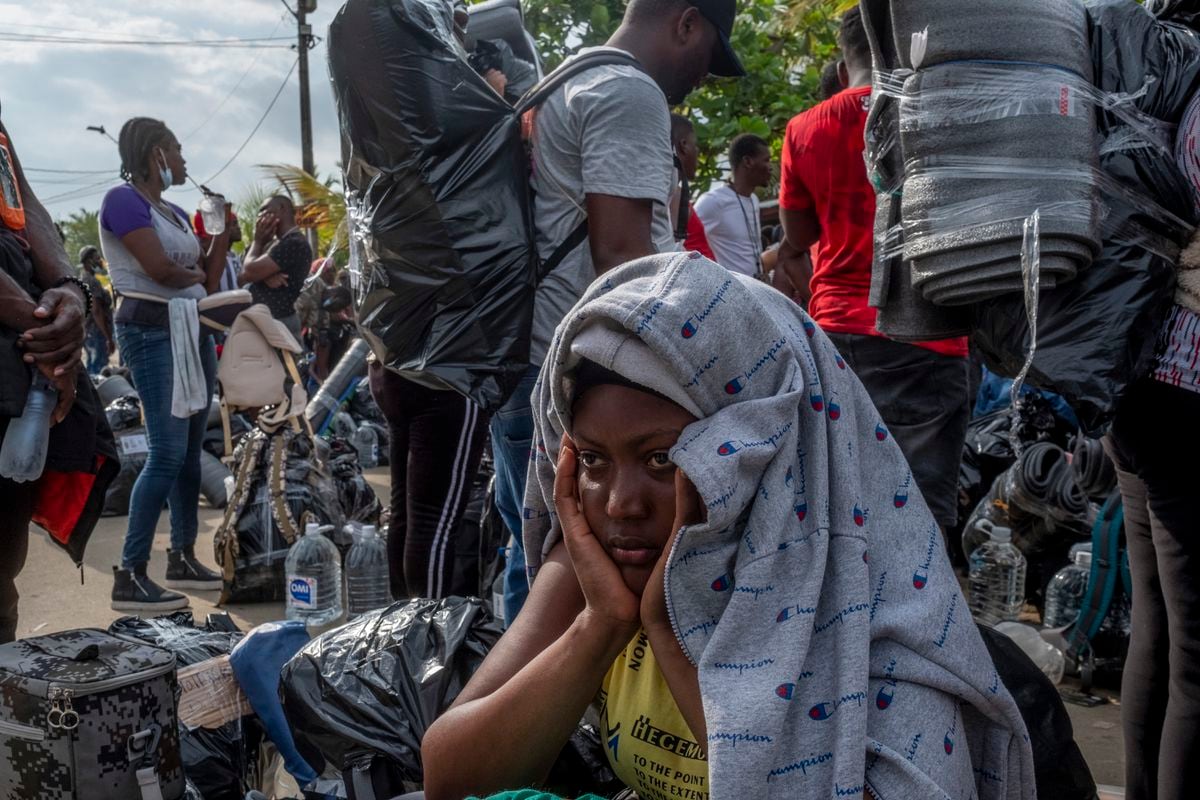
[ad_1]
“Solomon died this week in the jungle.” Jeff Sagasse, an almost perfect Spanish Haitian, tall and talkative, drops the sentence with cold resignation, as if it were an inevitable fate. Sitting in a restaurant in Necoclí, a coastal city in Colombia where more than 10,000 migrants have gathered while waiting to cross to Panama, he pulls out his cell phone and shows a photo. Raymond Salomon, wearing a red broad-brimmed hat, looks at the camera. On his photo, a drawn cross and a message in Creole: “It is with great regret that I learned this news. Rest in peace, my friend,” writes a Haitian living in Chile in his WhatsApp status. They say that he was 42 years old and that he was a mason, who tried to cross the impenetrable jungle of Darien with eight parents and drowned in a swollen river. That no one could help him. The jungle swallowed up. his body. “El Salomon was an excellent construction worker, before leaving, I told him to take care of him. But he left us,” says Irvens Norvilus, another Haitian who is about to go to Darien , from Chile.
Authorities aren’t sure how many migrants have died trying to reach Panama, just one stop on the long journey through Costa Rica and Mexico to reach the United States and fulfill their American dream, but those who have crossed say the Darien Gap, With 500,000 hectares, it is one of the most dangerous crossings in South America. That this humid and closed jungle is a cemetery.
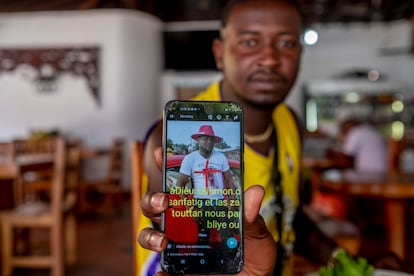
More information
The dangers come from all fronts and Haitians know it. But they avoid mentioning it. Others think they have no choice. “Yesterday I cried, I called my family, but my sister told me: do anything but don’t go back, you’ve already done it, keep going,” says Surys Rivera, a Dominican who travels with a group of Haitians, buying a pot of creoline, a disinfectant supposed to scare away snakes and other jungle animals. In her suitcase, she already has three inhalers because she has asthma, pain relievers and little clothing. He left Chile, passed through Peru, Ecuador and Colombia and offered it to lose weight. He leaves us his cell phone number to tell us about his trip over the past two days. Still not responding. Migration is an open question, a WhatsApp with no signal or answer.
From the Caribbean district to the Villa Haiti
The quay of Necoclí is lively. Like many days since July, thousands of Haitian men, women with children in their arms are lining up to board a boat and leave this coastal town of 70,000 inhabitants (20,000 in its metropolitan area), where they are. for several days, in the direction of Capurganá. , the last place before entering the Darien jungle.
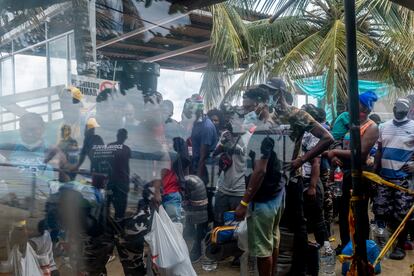
African music fights with Colombian vallenatos over a loudspeaker, a salesman reads the names of migrants who have obtained a quota and count to 11, through a megaphone. He asks to put on the masks but no one pays attention to him. The damp heat suffocates. A Haitian couple carrying a baby cannot get on the boat. They are from Brazil and do not speak Spanish. They could not buy the ticket to travel in commercial companies and will have to wait another day or venture into illegal boats. The grief is noticeable to them, but they can’t express it either.
A few blocks away, another huge group of Haitians try to top off space on a boat. Villa Haiti called this area where about a thousand people gather every day who leave in legal boats. According to Panamanian authorities, 18,000 migrants entered their country in July alone. Haitians are organized by groups of families or friends, neighbors who say they can help them in the jungle. One day before each trip, they send an animator to buy tickets, but they do not always have enough and at the time of the trip, the neighborhood cell breaks down.
– ”All children over 2 pay. You have to put 92 people there and there are 94 of them. The only option is for one person from the group to get off, ”explains a Colombian who organizes the boats. “It’s humanitarian aid, but it’s also business, dad.
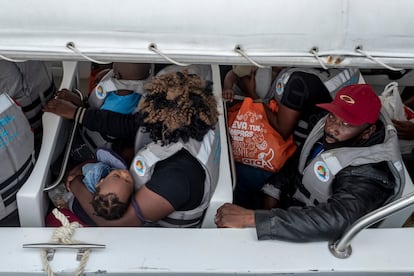
Migrants pay $ 55 for a trip to Capurganá, they leave with life jackets and in good condition. Their suitcases protected by bags and marked with their name. But the passage costs just over double what a tourist pays to visit this place. In Necoclí, the vital risk of a migrant is calculated in dollars which circulate throughout the city and have also reactivated their trade. The more money there is, the less risk there is, they say. Even if the reality is different.
Those who have more money and fear the jungle, prefer to pay for illegal boats, which leave on dark and not very windy nights. They give up to $ 450 per person to coyotes, as migrant smugglers are called, who take them directly to Panama, by sea. “Eight days of dangerous marches, chasms and robberies are avoided”, assures a local source.
“Unfortunately, it was believed that the problems were the animals, the greatest danger is the criminals who violate the rights of others”, confirms the director of Migration Colombia.
The sea that swallows migrants
But the sea also swallows migrants. In January of this year, a boat with Haitians wrecked in Pinorroa Bay, on the Colombian side. They found three bodies, including that of a six-year-old girl, but four other migrants are still missing. Earlier in 2019, 21 more Africans died, including a one-year-old baby. “The fact that this is irregular migration masks the deaths. The same thing happens in the Darién plug ”, explains the director of Migration Colombia, Juan Francisco Espinosa.
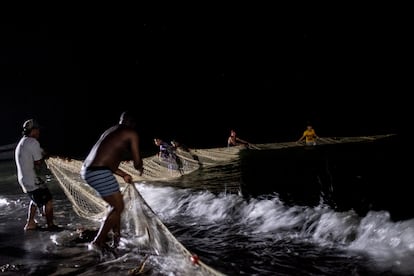
In any case, the migrants pay “guides” who charge them $ 120 each and offer them security in an environment of violence and armed groups like the Clan del Golfo. “I ask those who think they will come not to come, not to come, there are many dangers in the jungle. They took my things but they left my life. The guides dropped us off on the second day, ”says a Venezuelan who has already crossed El Darién. They are exposed to theft, rape and murder, according to several testimonies circulating on the beaches of Necoclí among them.
An effect of the pandemic
The origin of this humanitarian crisis is old but triggered by the coronavirus pandemic. After the earthquake in Haiti in 2010, many emigrated to Brazil and Chile. But the economic effects of quarantines in these countries have made them resume their activity across the continent. “I had a nightclub that closed with quarantine,” says Sagasse, 26. Dressed as a basketball player and with a gold chain hanging from his chest, he says he would like to speak with the President of Colombia. “We need a good means of transport, a humanitarian passage to Panama. We don’t want to stay in Colombia, we just want to go and continue in the United States or Canada ”.
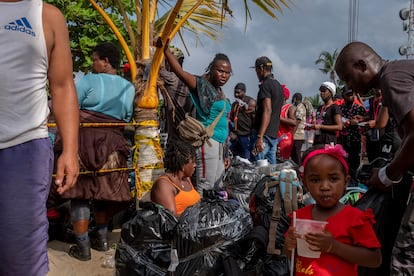
It is indeed a transit migration which, however, has a strong impact. According to Migración Colombia, this is the most important extraregional migratory movement of the last 15 years. In 2016 there were 34,000 migrants in transit, in 2019 19,000 and in 2020 4,000. Now you can see the reaction to the 2020 lag, adds Director Espinosa.
The agglomeration of migrants in Necoclí has been classified as a health crisis. Children, explains a doctor from the municipal hospital who goes to the beach for free, usually have diarrhea and adults, the flu. From Covid. 19, little is said. Nearby, a post of the Family Welfare Institute provides nutritional supplements for pregnant women and children. But the help stops there.
Rumors circulate like the wind from the sea and migrants cling to the slightest certainty, an image, a sound of who has managed to cross the border. When they are not angry with journalists, they come to wonder about the possibility of a humanitarian approach. “What we know, is it true that they will be one for Cubans and Venezuelans?” Asks Julio Chacón, a Cuban who went to Suriname, arrived in Venezuela, went to Colombia and works now as a waiter to pay for the passage in the jungle.
The same expectation for a group of Venezuelans, who came to Necoclí on foot, and live in tents on the beach. Led by Saïda González, a former Venezuelan soldier who cries every time she talks about her uniform, they also implore a corridor that will allow them to reach Panama safely. “We know of rapes, robberies and deaths in the jungle,” said the lady of videos that have reached them from compatriots in which they show some deaths.
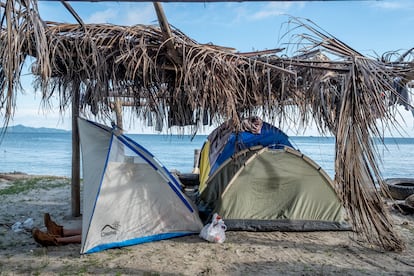
The Colombian and Panamanian authorities have decided to explore humanitarian avenues for “the orderly and safe passage of migrants”. On Monday, he said, Panamanian Foreign Minister Erika Mouynes will visit the Colombian embarkation area to determine a quota of migrants who can be received in an orderly and safe manner. “We don’t want migrants to run the risk of drowning or crossing the Darien, where they are at so much risk. There are a lot of children and women, ”adds Colombian counterpart Martha Lucía Ramírez.
For many, like Solomon or the baby from the Democratic Republic of Congo, who passed away in 2019, it was too late. The same as for Surys who, if her asthma did not leave her on the road, she is on her fifth day of travel.
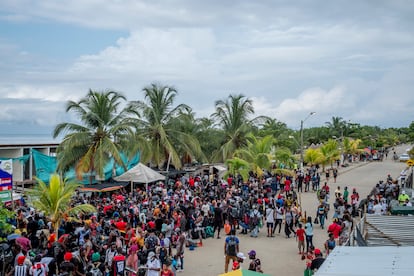
As these decisions become realities, migrants do not stop. Guerlande Lesperance is 21 years old, a small body and a lot of fear: she cannot swim. A few days before boarding a boat that would take her directly to Panama, she was assaulted by the fear of drowning, that her family would see her sink and that no one could do anything. “There are a lot of people who died in the crossing of the water, I wouldn’t want to see that,” he said. Like many others, he left his cell phone number, but he still hasn’t answered.
Source link
 Naaju Breaking News, Live Updates, Latest Headlines, Viral News, Top Stories, Trending Topics, Videos
Naaju Breaking News, Live Updates, Latest Headlines, Viral News, Top Stories, Trending Topics, Videos